- Home
- international
- news
- How tattoo styles and trends have changed over the years
How tattoo styles and trends have changed over the years
James Pasley

- From social security numbers to butterflies, tattoo designs have changed dramatically over the last 150 years.
- From 1960 to 1995, the number of tattoo artists working in the US skyrocketed from 500 to 10,000.
Over the years, tattoos have gone from the outskirts of society into the mainstream.
Tattoo designs have gone through all sorts of trends — from simplistic black-and-white drawings to body art and sleeves to micro tattoos.
According to a 2019 Ipsos poll, 30% of Americans now have a tattoo.
From traditional sailor tattoos to tribal tattoos of the 1990s, here's how tattoos have changed and developed over the last century.
New York City is considered the place where the trend of modern tattoos began. In the mid-19th century, a man named Martin Hildebrandt started tattooing soldiers to ensure they could be identified if they died in battle.
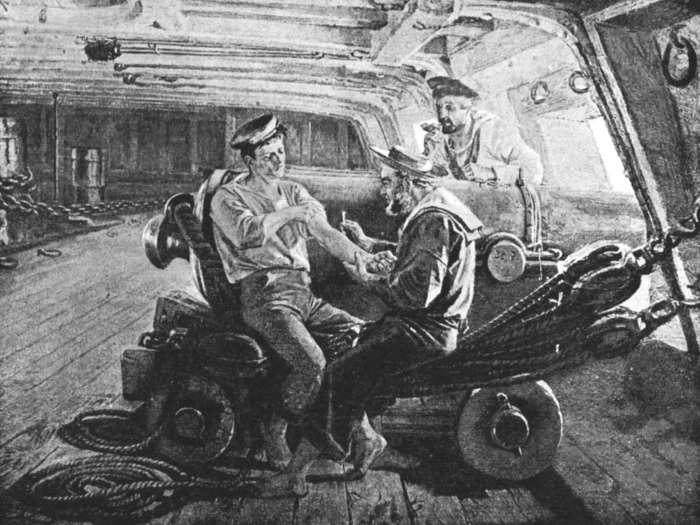
Sources: Time, Grey Journal
In the late 19th century and early 20th century, tattoos became a regular sight at circuses and freak shows, with many performers often completely covered in body art.
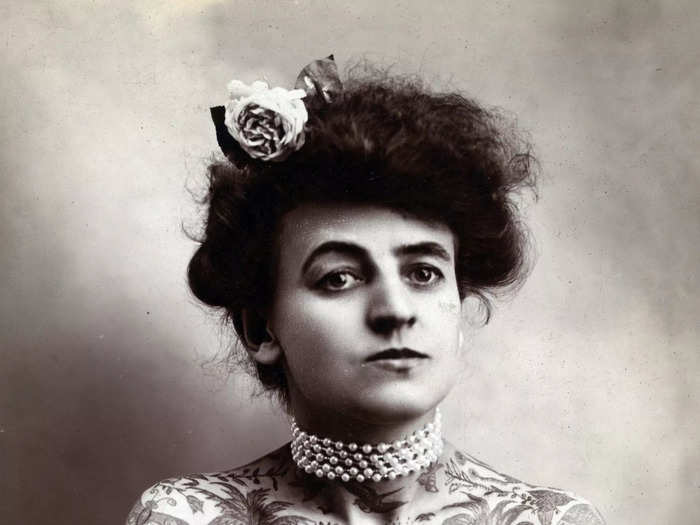
Source: Grey Journal
In the early 20th century, black tattoos were the dominant trend. The tattoos were often of graphic images with bold lining.
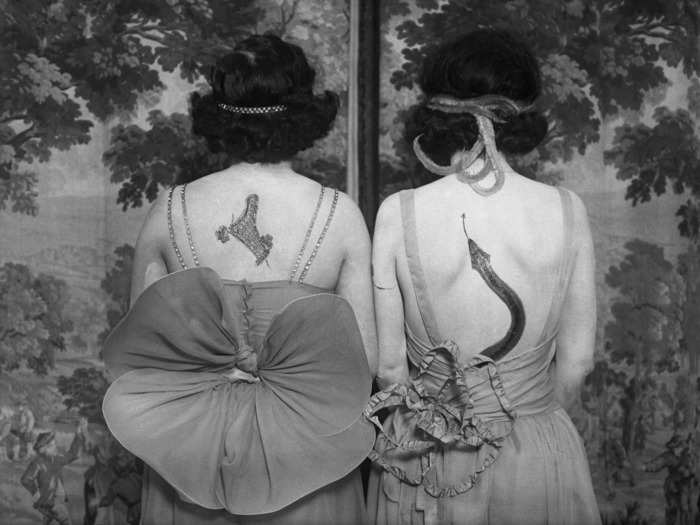
Source: Inked Mag
In the 1930s, when the US first introduced social security numbers, some people decided it was easier to tattoo the number on themselves rather than trying to remember it.
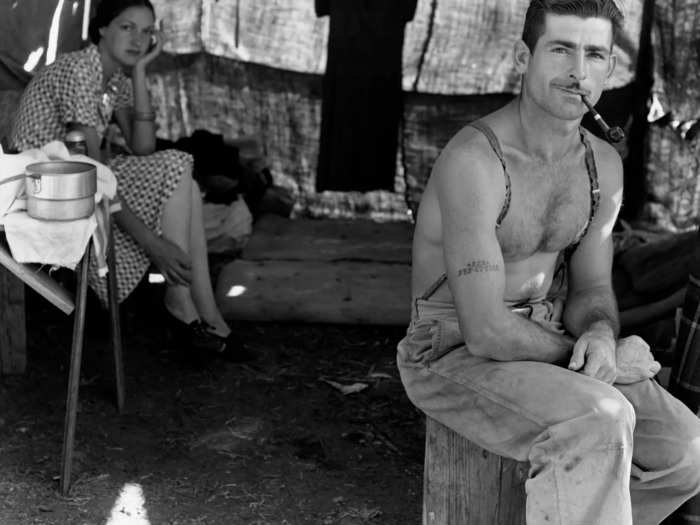
Source: Custom Tattoo Design
While the butterfly tattoo would become iconic in the 1990s, they were already being done in England in the 1930s.
During this period, women regularly dabbled with tattoos, though people often didn't realize it given its subtlety. The tattoos were cosmetic, often used as a way to replicate makeup.
These tattoos included beauty spots, tinted cheeks, and permanent eyebrows.
Source: Grey Journal
Sailors are the most well-known early tattoo converts. Their tattoos were often a way to tell their story or to show where they had travelled.
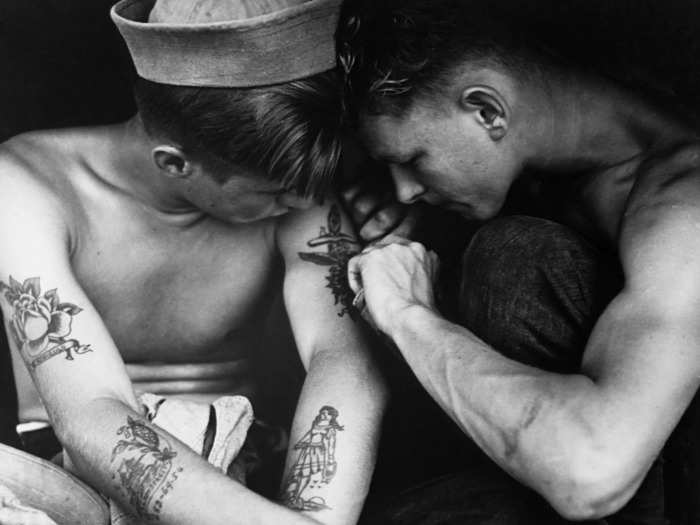
Source: Refinery29
Certain symbols meant certain things. For instance, a turtle meant the sailor had passed across the equator, or a swallow meant they had sailed more than 5,000 miles.
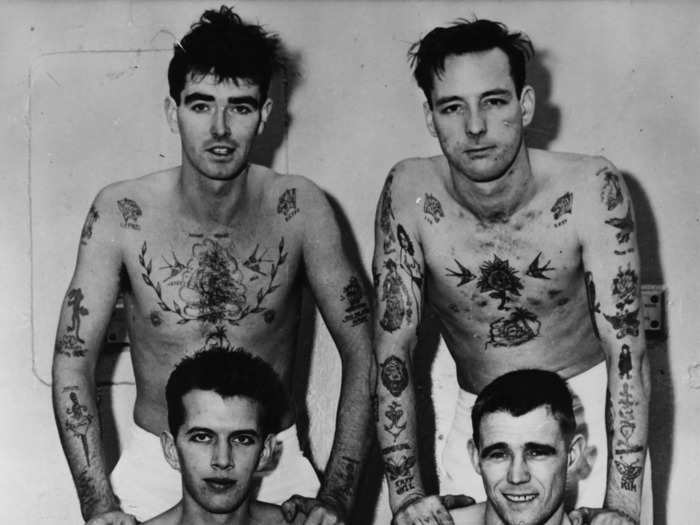
Source: Refinery29
After World War II, American and British tattooists developed their craft and drew from what they had seen inspired by their experience traveling to Asia and seeing how tattoos were done there.
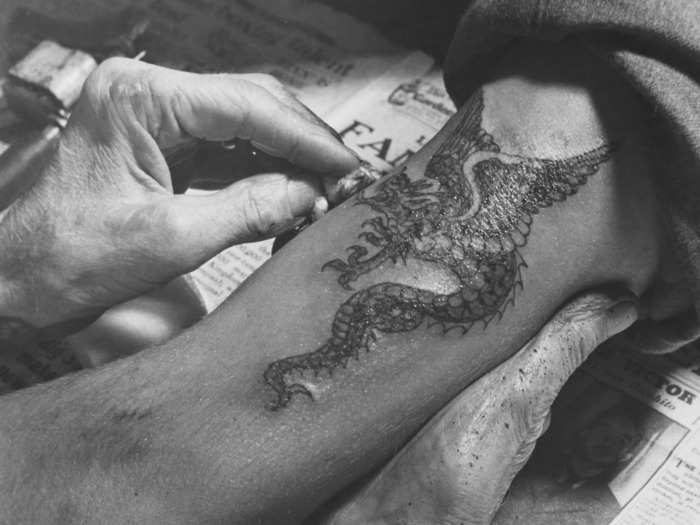
Sources: Inked Mag, Refinery29
Sailor Jerry, formerly Norman Collins, was one of the most prominent tattooists of this era. His go-to designs included the anchor, ships, women, and symbols of American patriotism, like the American Flag or bald eagles.
His tattoo designs are still popular today.
Sources: Inked Mag, Refinery29
Thanks in part to Sailor Jerry's popularity, tattoos began to get more colourful in the 1950s.
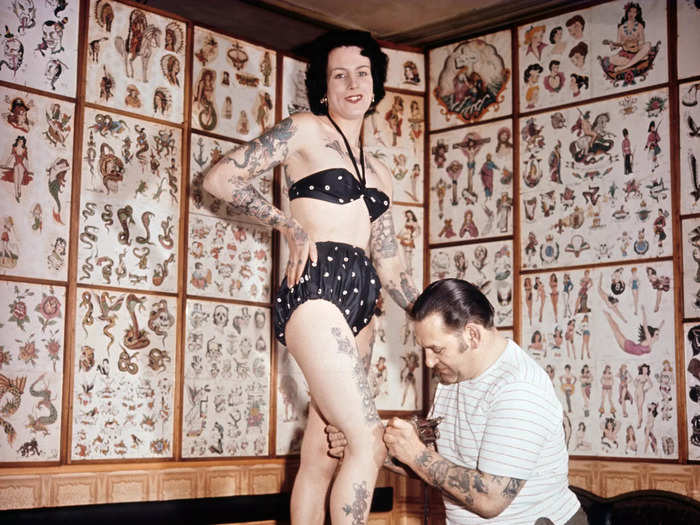
Source: Inked Mag
During the 1950s, tattoos were linked to masculinity. The Marlboro man had tattoos and WWII veterans did too. Since veterans were celebrated for their sacrifices, their tattoos became somewhat normalized as well.
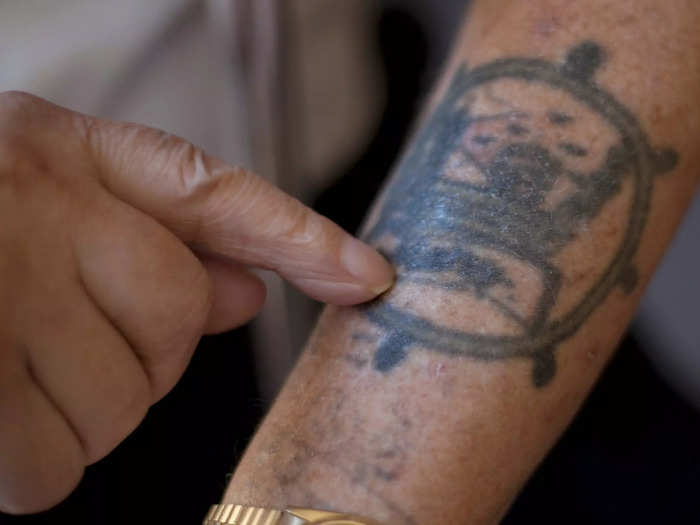
Sources: Grey Journal, Custom Tattoo Design
But at this point, tattoos were still perceived as outside the mainstream.
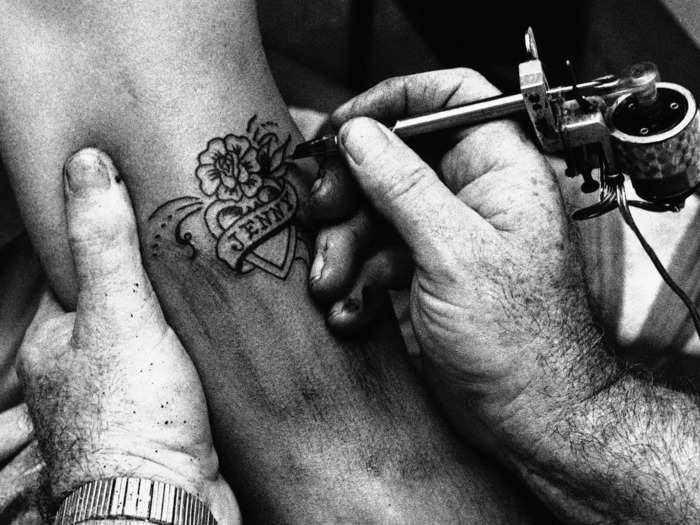
Sources: Grey Journal, Custom Tattoo Design
In the 1960s, tattoos started to become more acceptable. Singer Janis Joplin helped popularize tattoos when she got a tattoo of a Florentine bracelet on her wrist, which ended up on the front cover of Rolling Stone magazine.
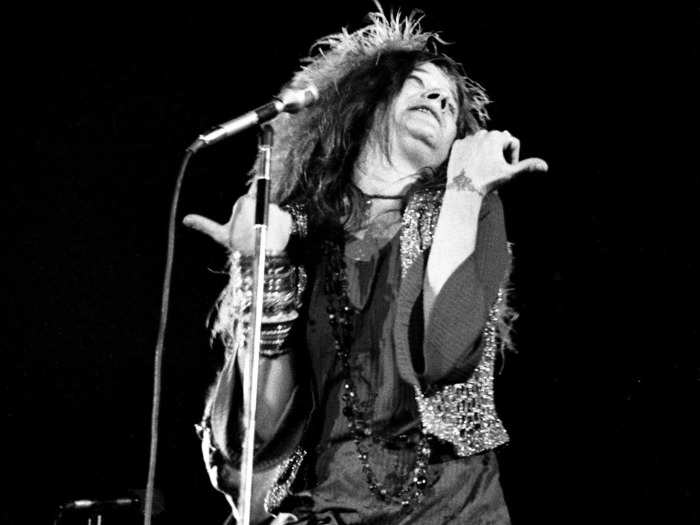
Sources: Inked Mag, Refinery29
Not everyone condoned them, but for those who were joining the counterculture movement, they were a way to show their rebellion and individuality. And it helped that tattoos were permanent.
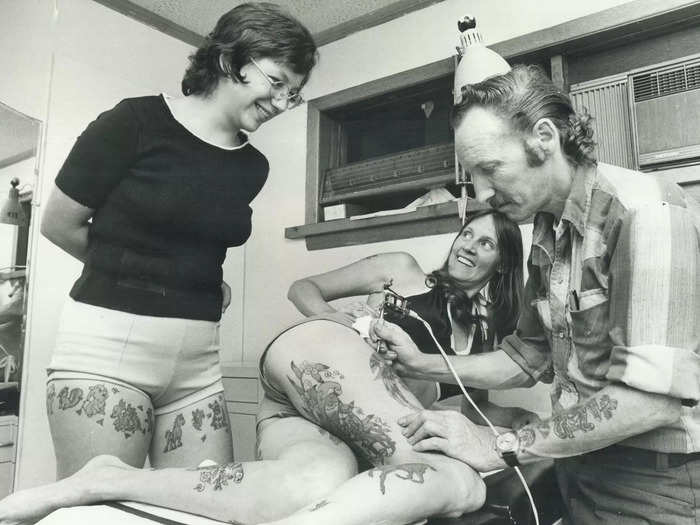
Sources: Inked Mag, Refinery29, Grey Journal
In the 1970s, more mystical tattoos began to appear — images of castles and fairies, alongside classic biker tattoos like skeletons and flames.
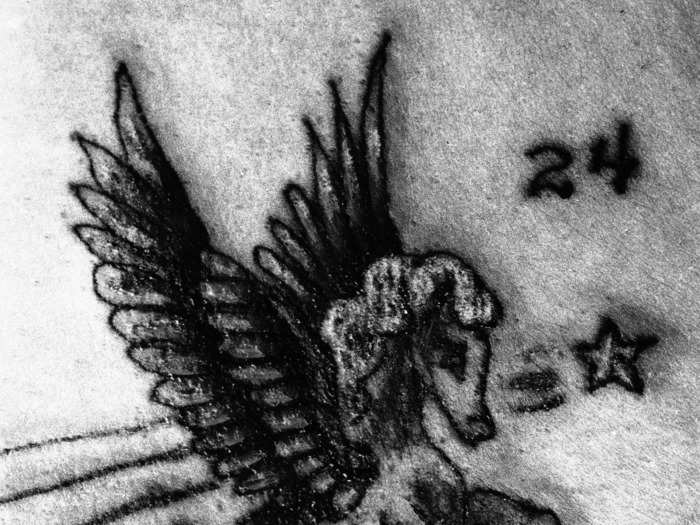
Sources: Inked Mag, Refinery29
In the 1980s, the punk scene embraced tattoos. Many punks got body art tattoos to complement their spiked hair and piercings.
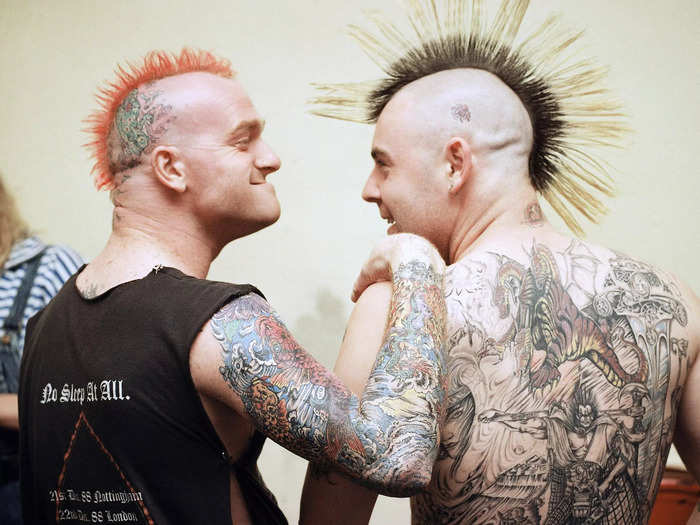
Source: Inked Mag
It was also a period where tattoos became more sophisticated due to technological improvements. Needles were made thinner, and better ink was available. People's bodies started to be treated more like canvases.
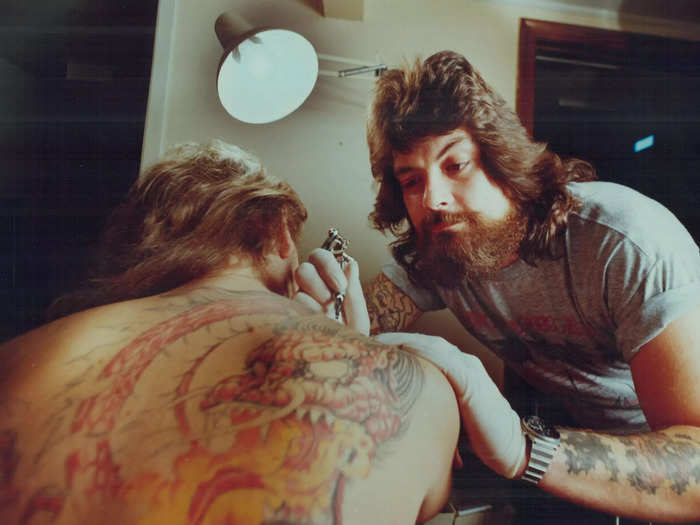
Sources: Refinery29, Custom Tattoo Design
This was also when tattoo sleeves and bodysuits started to get popular.
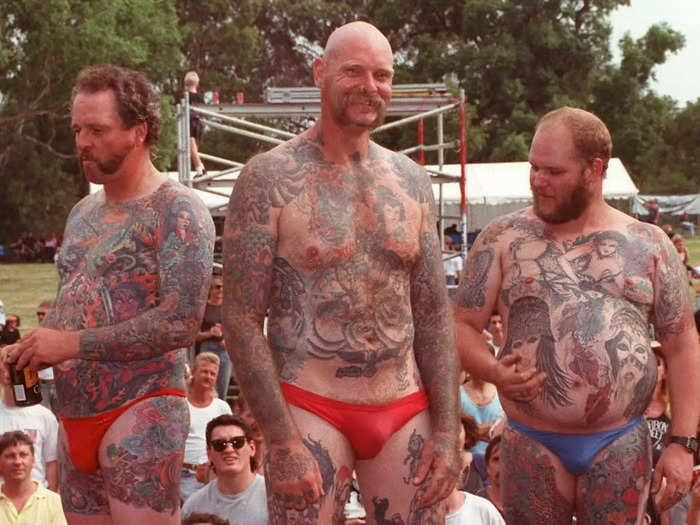
Sources: Refinery29, Custom Tattoo Design
The 1990s were a major period for tattoos globally. In 1995, there were 10,000 tattoo artists working in the US. Thirty-five years earlier, there were only about 500.
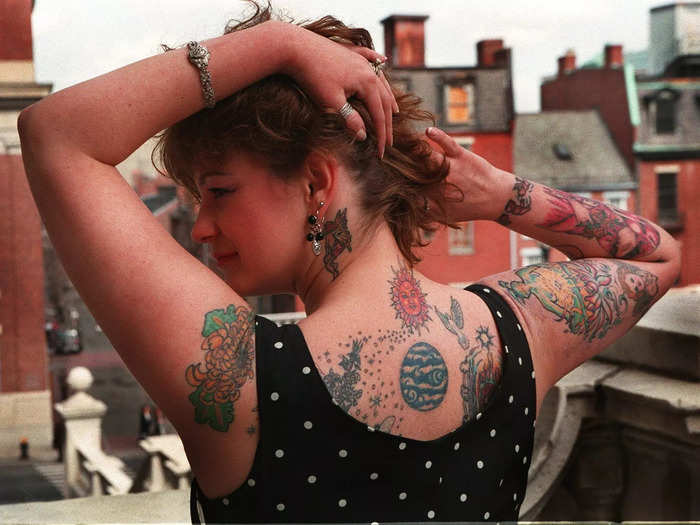
Source: Refinery29
For the first time, women were getting tattoos as much as men. This led to a surge in more feminine tattoos, such as the iconic butterfly tattoo.
Sources: Inked Mag, Grey Journal
Celebrities had a big impact on the tattoo industry. Tattoos like barbed-wire armbands were popular thanks to Pamela Anderson.
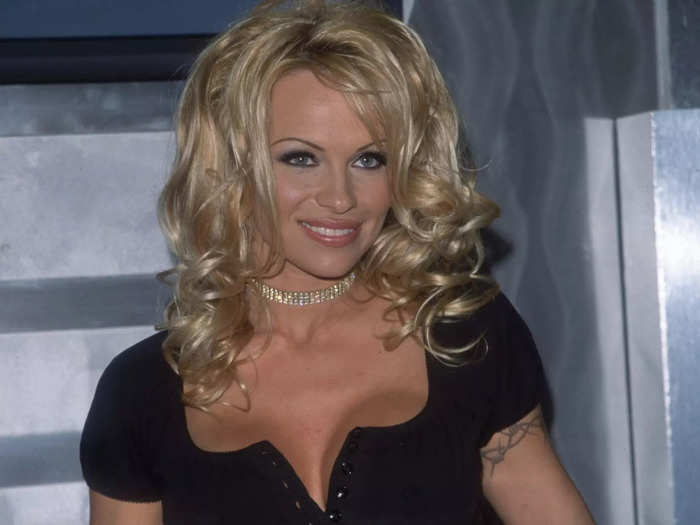
Sources: Inked Mag, Grey Journal
Rappers like Tupac, Eminem, and 50 Cent all had tattoos and further introduced the trend into a celebrity space.
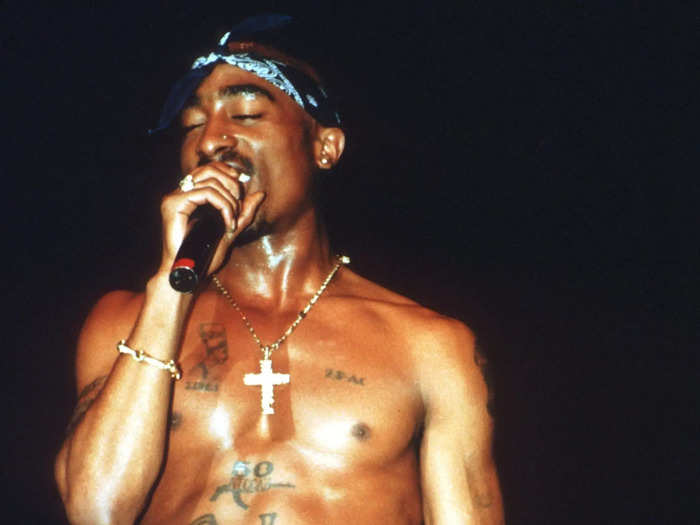
Source: BBC
But it was also during this decade that cultural appropriation had its day as the popularity of tribal tattoos and Chinese letters increased.
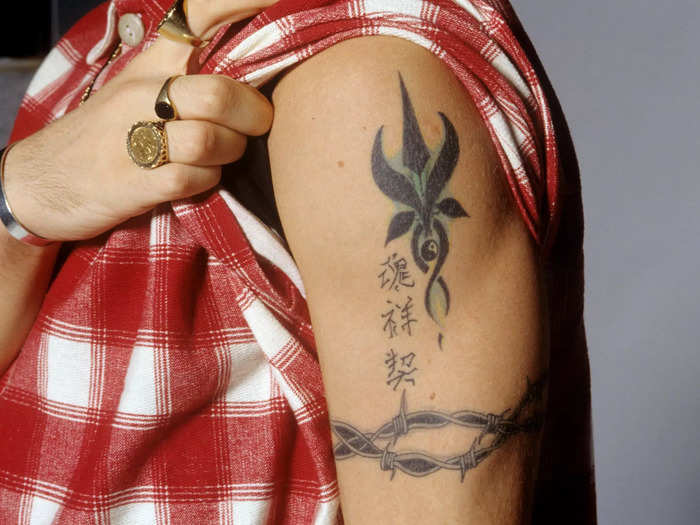
Source: Custom Tattoo Design
In the early 2000s, a trend known as New School was popular. These cartoonish tattoos were a mixture of neon-colours meeting more traditional forms.
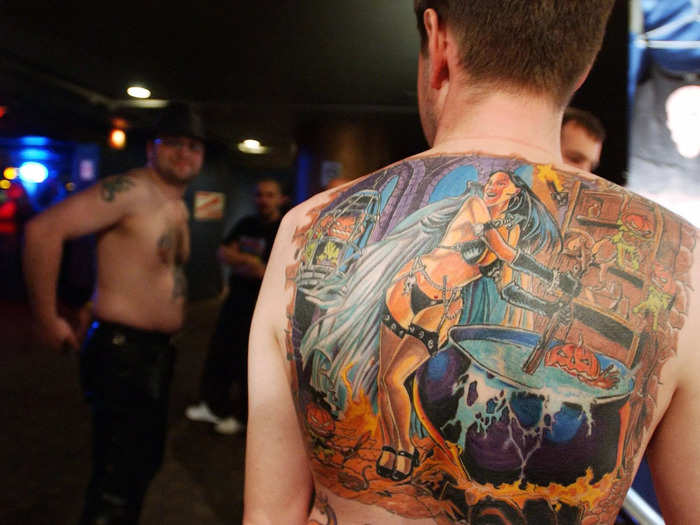
Source: Refinery29
It wasn't just the type of tattoo in the early 2000s that mattered, but also where they were located. This was the era when lower back tattoos became more prevalent.

Source: Allure
Along with the iconic butterfly, yin-and-yang became a popular tattoo design.
Source: Custom Tattoo Design
It was a period where some tattoos would probably be regretted later — especially given their permanent nature.
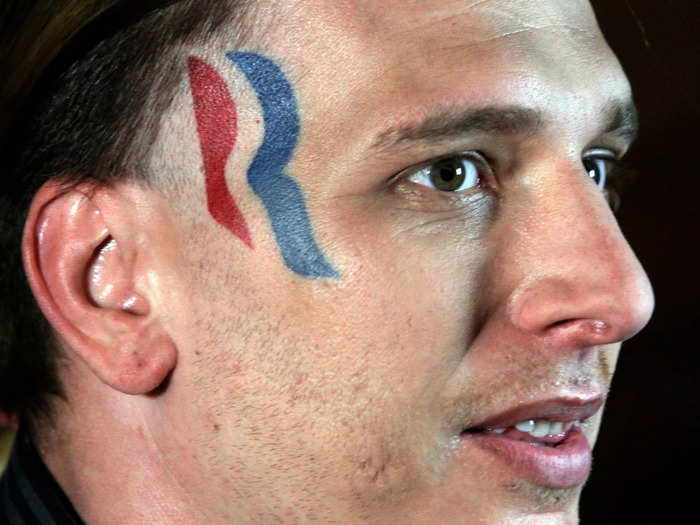
Luckily in 2012, the FDA approved the Picosure laser, which made tattoo removal the easiest it had ever been.
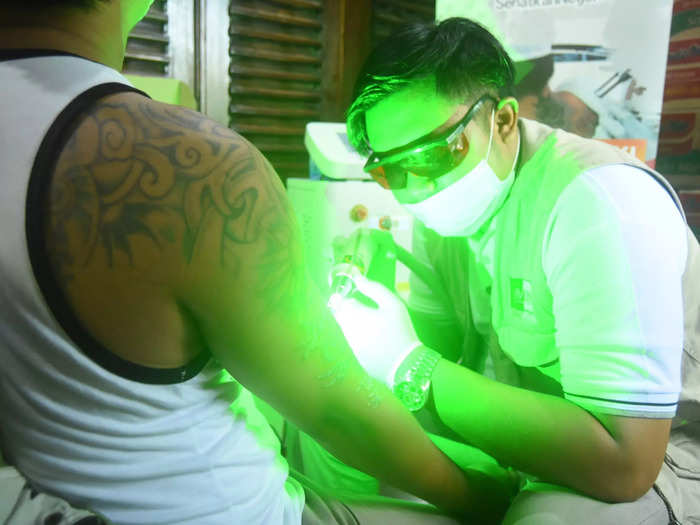
Source: Allure
Throughout the 2010s, celebrity culture — with the help of social media — made tattoos even more popular. Popular figures like Lady Gaga and Rihanna broadened the appeal to their millions of fans.
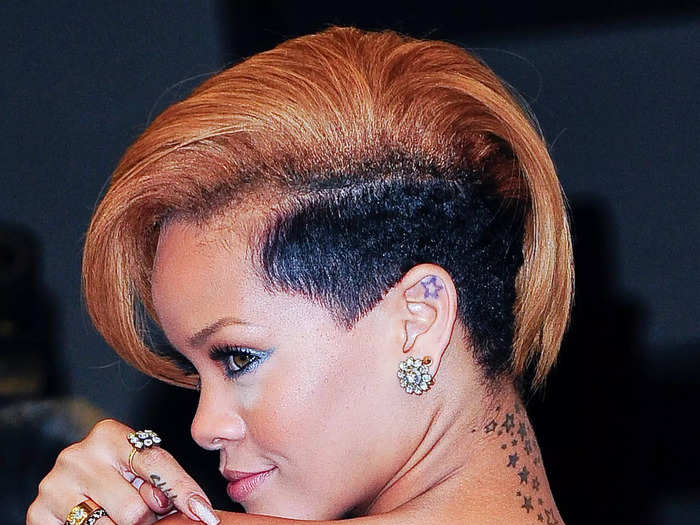
By 2012, 21% of Americans had a tattoo.
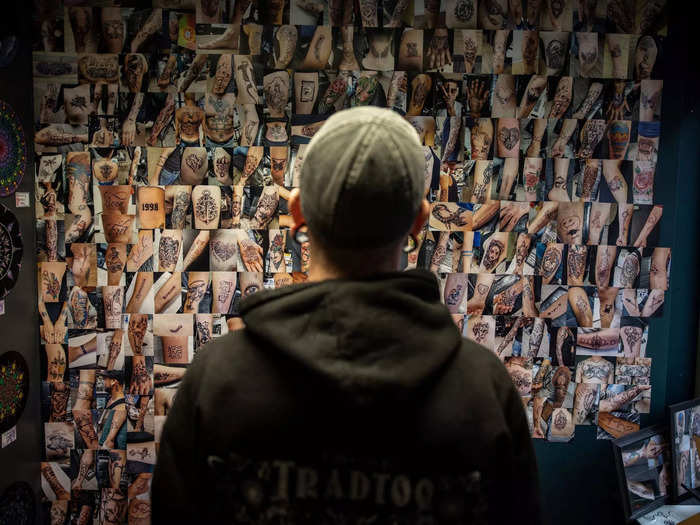
Source: Ipsos
Alongside celebrities, tattoo artists gained their own fair share of stardom, like celebrity tattoo artist Dr. Woo.
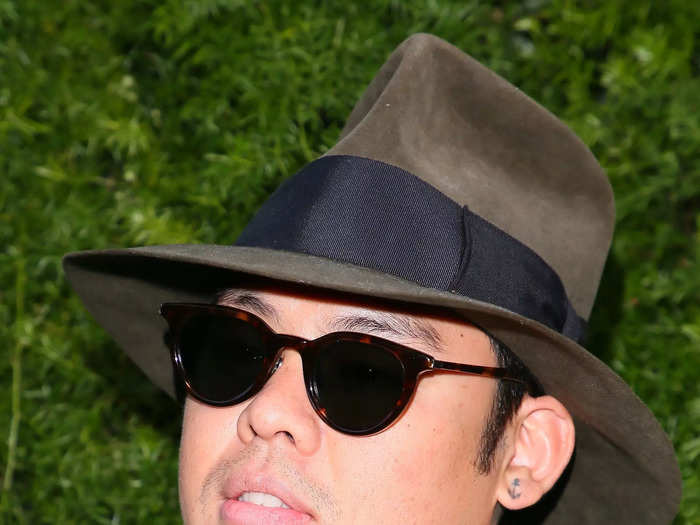
Source: Vice
Micro tattoos were one of the defining trends, according to Ink Mag.
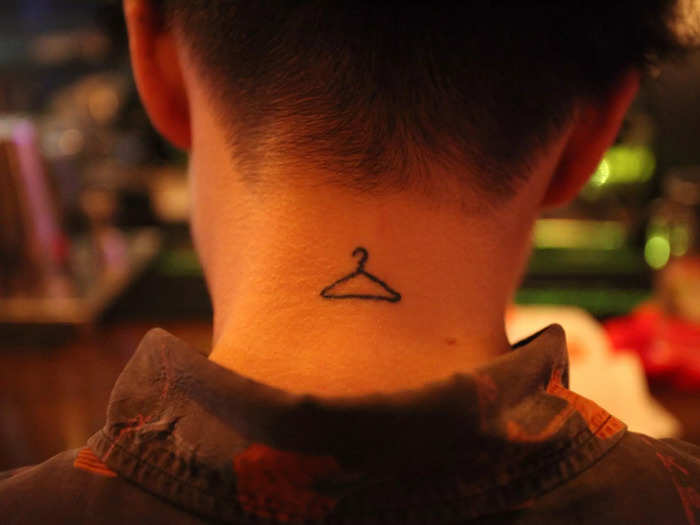
Source: Inked Mag
Finger placement tattoos became popular, with quirky small designs like moustaches, hearts, or smiley faces.
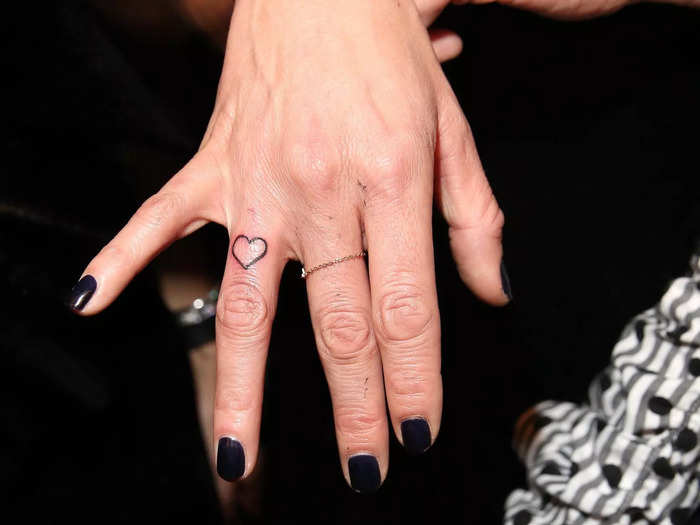
Source: Custom Tattoo Design
Another trend was geometrical shapes. This tattoo is designed to represent a soldier's three tours of the Middle East.
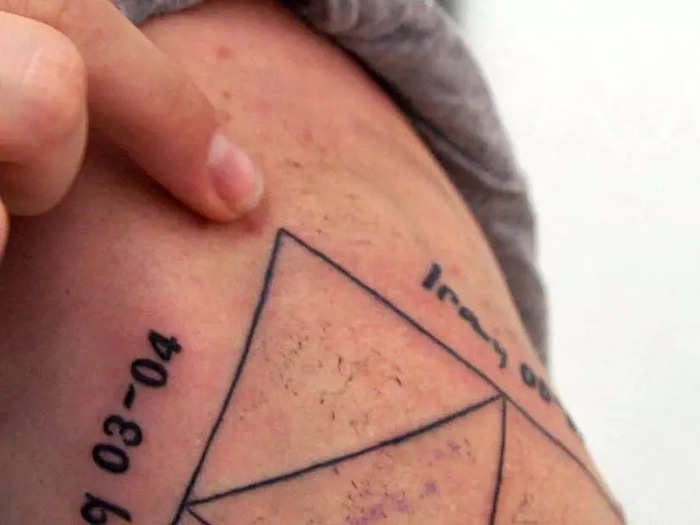
Source: Allure
Stick-and-poke tattoos — a form of non-electric tattooing — were also on trend. By 2019, about 30% of Americans had tattoos.
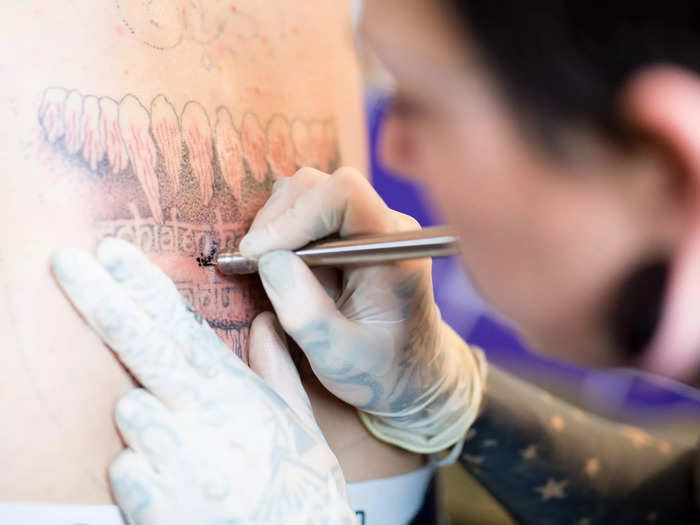
Sources: Refinery29, Ipsos
As for the current moment, tattooists told Insider in January that micro tattoos, full color pieces, and bold subtle line tattoos were popular.
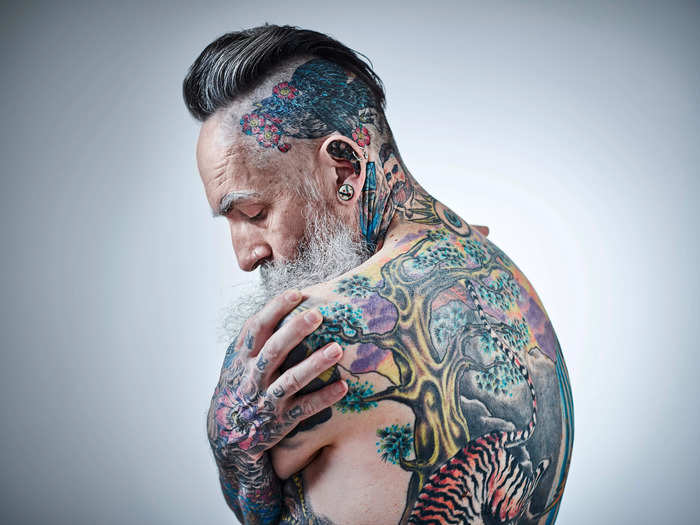
Meanwhile, tribal designs, white-ink tattoos, and pre-drawn tattoos were becoming less common.
Source: Insider
With technology making everything from getting the tattoo to removing it easier and less painful, little stands in the way of the permanent body art continuing to grow in popularity in the future.
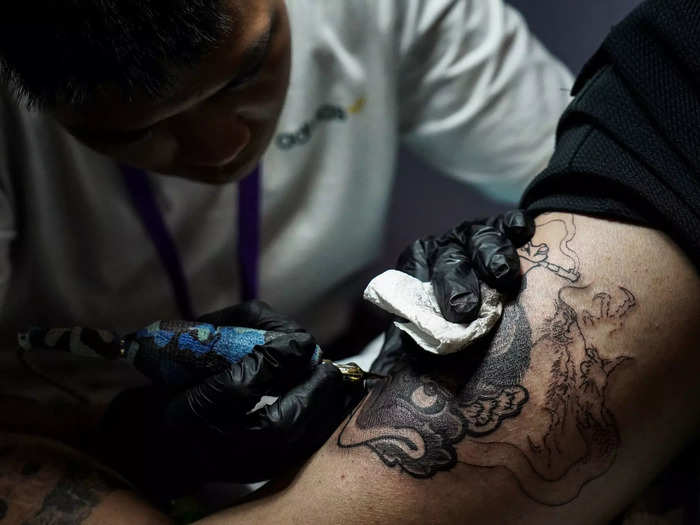
Source: WKYC
Popular Right Now
Popular Keywords
Advertisement